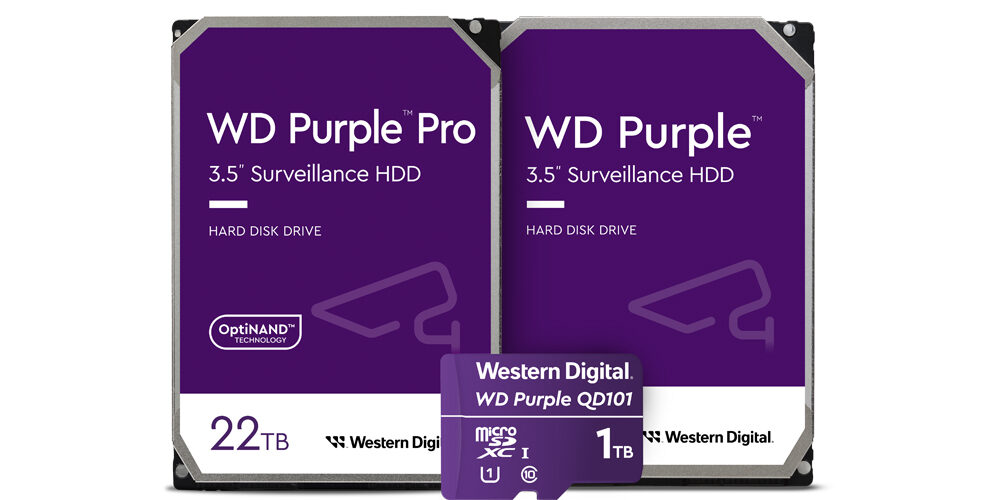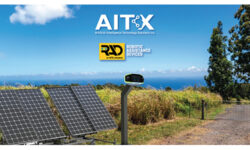New Smart Video Applications Demand New Storage Requirements
Advances in smart video recording are radically changing the way organizations in industries like transportation and retail use video to provide surveillance.

Image courtesy of Western Digital
By Marc Tanguay
Sponsored by Western Digital
Powered by artificial intelligence (AI) and machine learning (ML), advances in smart video recording are radically changing the way organizations in industries like transportation and retail use video to provide surveillance, optimize physical spaces and processes, or to improve the customer or user experience.
However, not all data storage is created equal. To accurately record incoming video and analytic data, choosing the right storage is key. Smart video management systems and AI applications demand new storage requirements and organizations are rethinking their approach in today’s data driven era.
AI is revolutionizing smart video and the storage it resides on
AI is used in every step of the smart video recording data chain. On camera, AI video analytics detect objects such as people, vehicles, packages and pets and apply rules-based actions. These actions can range from zooming in or expanding the field of view to saving seconds of video before and after detection, and delivering custom alerts based on what type of object the camera detects.
At the network video recorder (NVR) level, object detection on one camera may trigger recordings on other cameras. A front door motion may trigger recording of a side entrance or warehouse rollup door, for example. Camera generated picture streams can also be further analyzed by powerful GPUs running on the recorder to provide better accuracy or to overlay additional AI video analytics — such as telematic movement tracking of the object.
However, the transformative power of AI in smart video applications can only be realized through the resilience of the data that is fed into these algorithms. Hard drives that support smart video applications must be able to store multiple streams of video, pictures and data that are constantly inbound from multiple HD/4K cameras. Video surveillance, in particular, is considered a ‘write-intensive’ application, requiring that the hard drive is tuned and optimized to handle the vast amounts of incoming video streams.
Rethinking Data Storage: Beyond the Commodity Mindset
Unfortunately, many organizations facing these evolving storage needs tend to fall back on old habits by tapping into existing storage pools or purchasing capacity at the lowest possible price.
What they don’t realize is that desktop class hard drives were never designed to handle multiple streams or constantly write and rewrite multiple incoming video data streams and associated metadata. Nor were they designed to operate 24×7 or in harsh conditions such as transportation corridors, outdoor ATM kiosks and warehouses that may not have climate control.
The result? A lack of processing power and resiliency in the drives can cause excessive frame drops and jittery or stuttering streams. This can be a big issue when high-quality video is required to positively identify a shoplifter, make a determination between a pedestrian and roadside sign or track movement of a warehouse worker.
Organizations that need to meet these evolving requirements can look at new high-density disk drives (HDDs) specifically designed for smart video applications.
Using AI to deal with the intricacies of AI
What better way to meet the requirements of AI-powered smart video than with intelligent machine learning on the hard drive itself? That’s exactly what the Western Digital® family of WD Purple® HDDs do. These drives are powered by AllFrame™ technology, making them the right tool for the right job of smart video recording.
1. Improved data resiliency
AllFrame technology acts as a traffic controller for video recording, using ML to better handle incoming streams. Unique cache coalescence technology automatically identifies various media and makes a real-time decision about the most optimal way to buffer incoming data and write the data to disk. For example, primary video streams may be written straight to the disk while still-photo frames could be queued up and bundled together before being written to the disk. Similarly, metadata can be grouped in a cache and written over when it is less disruptive to other streams. Prioritizing video data in this way dramatically reduces frame drops and data packet loss — resulting in more resilient video recording and analysis.
2. Hardened for the most challenging environments
Whether it’s identifying vehicle class on a busy highway or monitoring a remote warehouse, smart video applications are an around-the-clock operation. Cameras do not have on/off buttons. Neither does the storage that video footage is stored on.
WD Purple and WD Purple Pro drives are designed for systems to operate 24/7. Built with tarnish-resistant components, WD Purple Pro drives feature a workload rating of up to 550TB per year*, includes a “mean time between failures” (MTBF) of up to 2.5 million hours**, and is backed by a 5-year limited warranty.† WD Purple drives features a workload rating of up to 180TB per year,* includes a MTBF of up to 1 million hours †† , and a 3-year limited warranty. In addition, the WD Purple family of hard drives are designed with RAID error recovery control to help reduce failures in supported video recorders.
3. Finely tuned for smart video recording
Western Digital operates a video surveillance lab that uses AI/ML to learn how its drives perform storing smart video streams. Western Digital’s Smart Video Recording Lab operates around the clock, constantly streaming to WD Purple and WD Purple Pro hard drives, installed into recorders and servers from leading manufacturers. Dozens of cameras are pointed at monitors playing scenes of different complexities in different environments. This constant tuning allows WD Purple and Purple Pro drives to support up to 64 concurrent single-stream HD cameras‡ while mitigating frame loss – ultimately enabling any smart video application at scale.
WD Purple drives are ideally suited for smart video applications
Whether it’s classifying video, enabling object detection or automating workflows on the factory floor, smart video applications powered by AI and ML are changing how organizations use video to help secure their facilities, improve productivity and deliver powerful customer experiences.
However, advanced applications require advanced storage capabilities. Engineered for video recording, WD Purple hard drive family powered by AllFrame technology meets these evolving requirements – using unique AI/ML capabilities to constantly learn and optimize how video is written to disk.
To learn more, visit: https://www.westerndigital.com/solutions/surveillance
* Workload Rate is defined as the amount of user data transferred to or from the hard drive. Workload Rate is annualized (TB transferred x (8760 / recorded power-on hours)). Workload Rate will vary depending on your hardware and software components and configurations.
** MTBF specifications are based on a sample population and are estimated by statistical measurements and acceleration algorithms under typical operating conditions: workload of 90TB/year and drive temperature of 40°C. Derating of MTBF will occur above these parameters, up to 65°C drive temperature. MTBF does not predict an individual drive’s reliability and does not constitute a warranty.
† See http://support.wdc.com/warranty for regional specific warranty details.
†† Projected values. When final, MTBF, and AFR specifications will be based on a sample population and are estimated by statistical measurements and acceleration algorithms under typical operating conditions, workload of 220TB/ year, and drive temperature of 40°C. Derating of MTBF and AFR will occur above these parameters, up to 550TB writes per year, and 65°C drive temperature. MTBF and AFR ratings do not predict an individual drive’s reliability and do not constitute a warranty.
‡ Single stream at 3.2Mbps (1080p, H.265, 25 fps). Results may vary depending on camera resolution, file format, frames per second, software, system settings, video quality, and other factors.
If you enjoyed this article and want to receive more valuable industry content like this, click here to sign up for our FREE digital newsletters!

Security Is Our Business, Too
For professionals who recommend, buy and install all types of electronic security equipment, a free subscription to Commercial Integrator + Security Sales & Integration is like having a consultant on call. You’ll find an ideal balance of technology and business coverage, with installation tips and techniques for products and updates on how to add to your bottom line.
A FREE subscription to the top resource for security and integration industry will prove to be invaluable.














